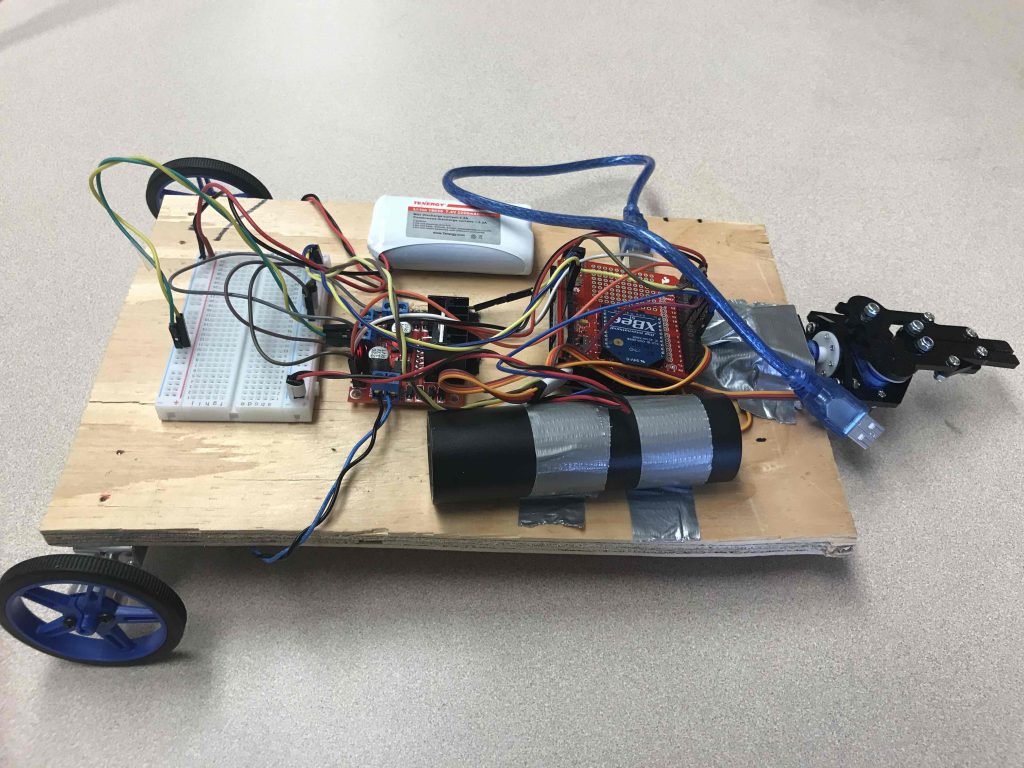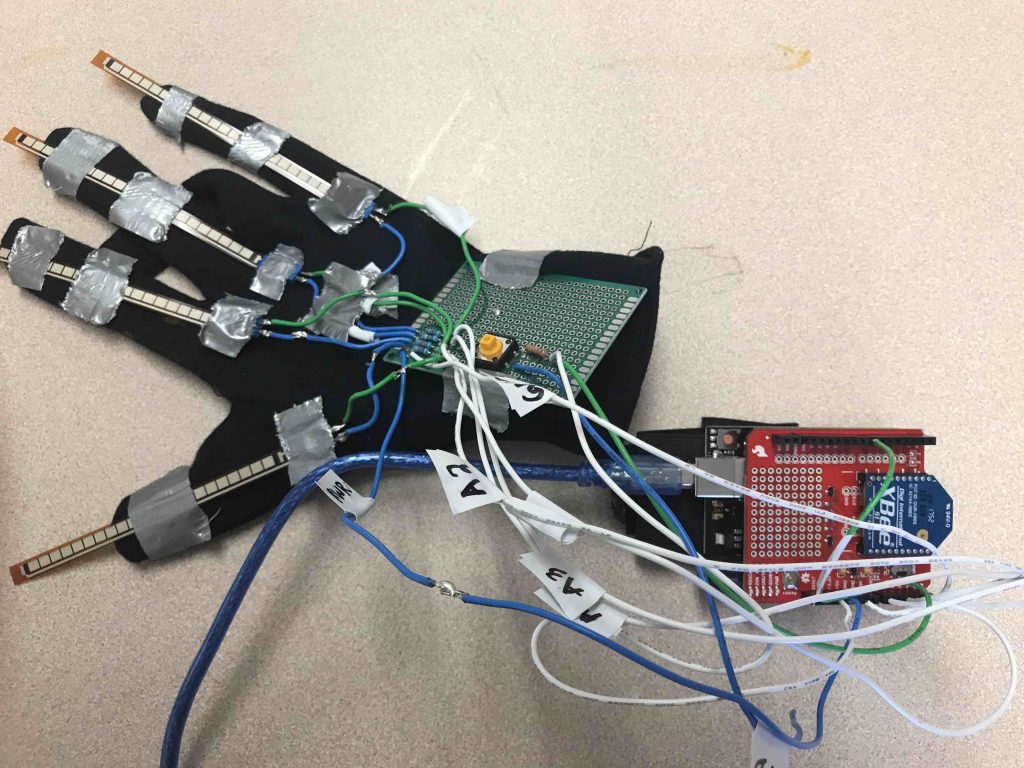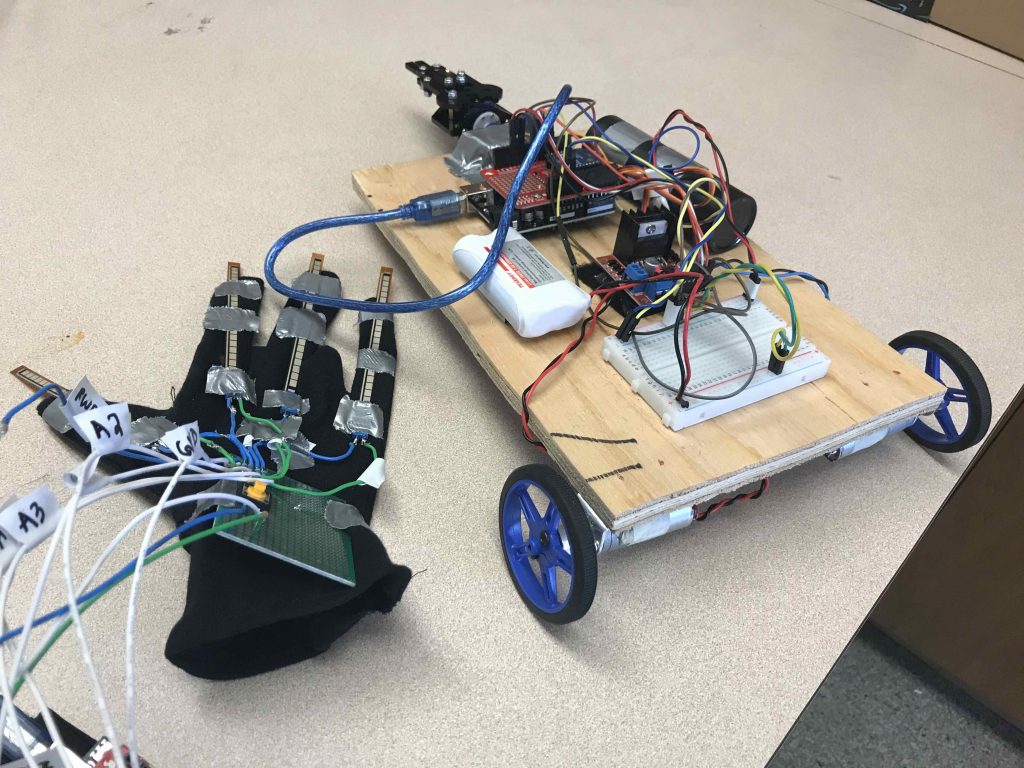Reflection
Final Milestone
My final milestone was mounting my flex sensors onto a glove and my motors onto the RC Car. For the glove, I soldered all my connections for the flex sensors and the button onto a PCB. Each of the flex sensors are taped to the glove’s fingers, so that as the finger moves, the flex sensor bends. For the RC Car, I mounted all the components and motors onto wood. One of the largest challenges I faced during this milestone was working with the PCB on the glove. Because I had never soldered on a PCB before, it was difficult for me to make sure that the connections were solid. I ended up having to resolder and desolder my connections several times.
Third Milestone
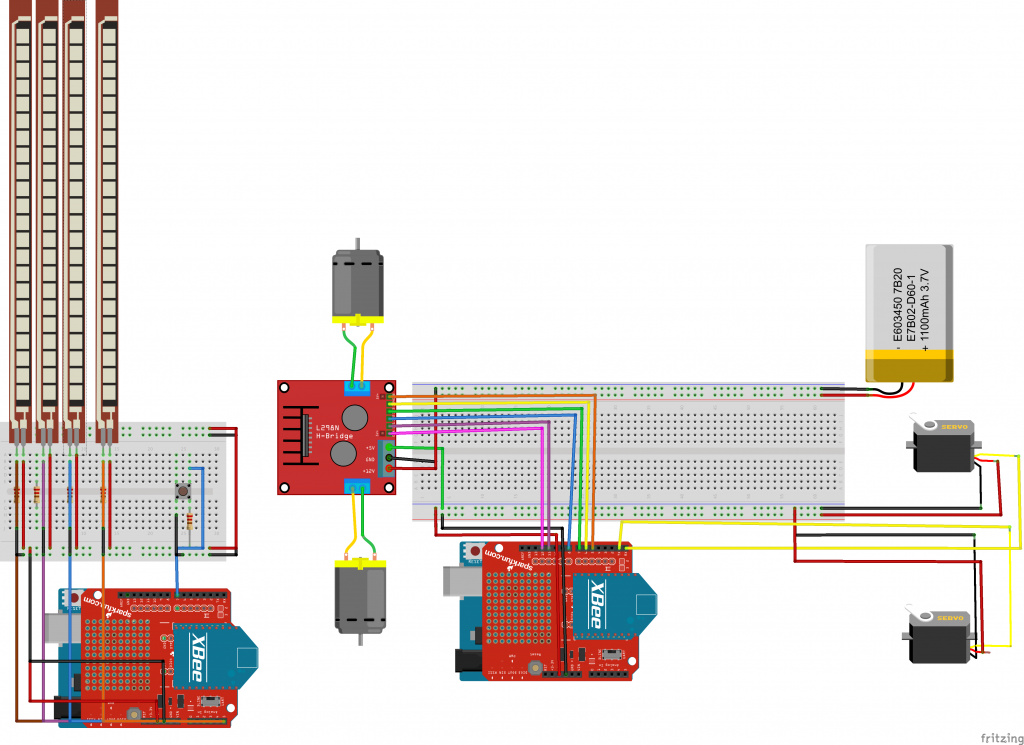
Second Milestone
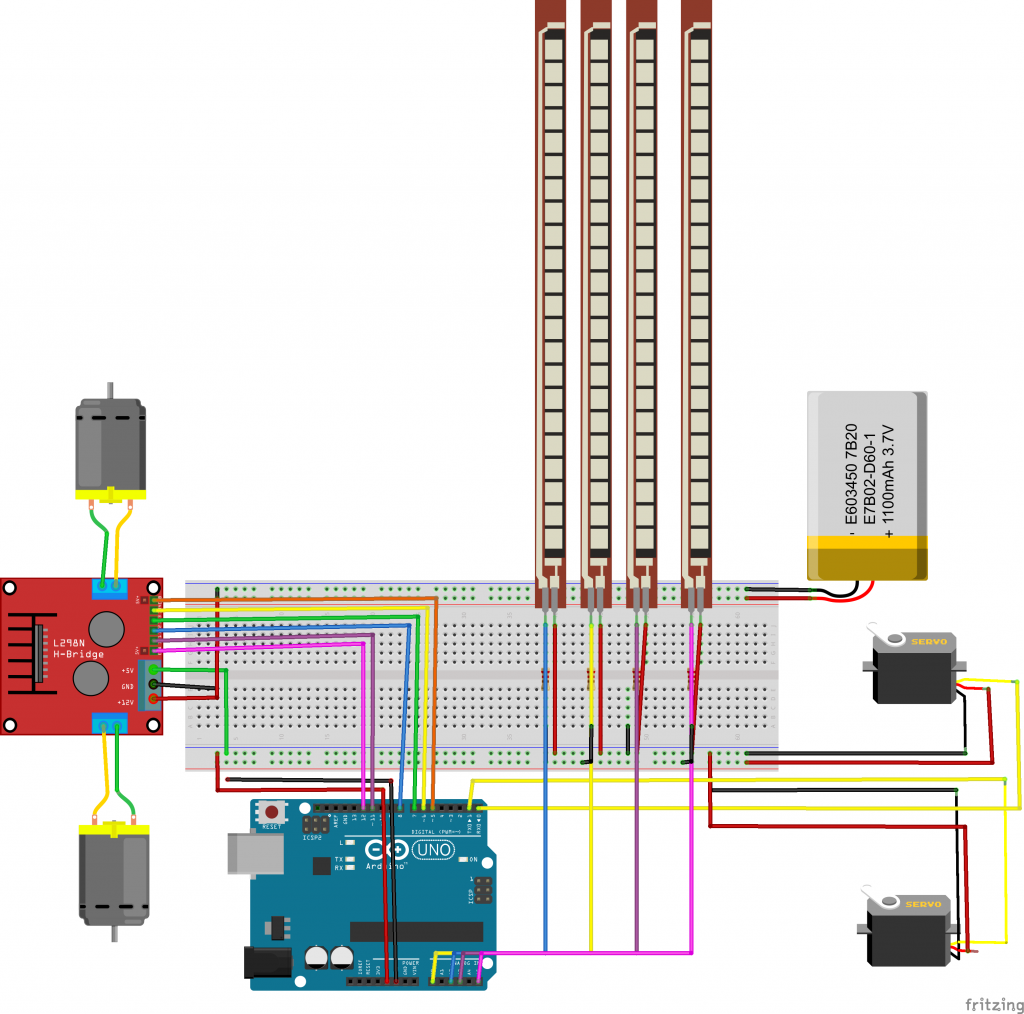
First Milestone





